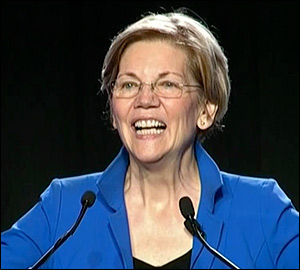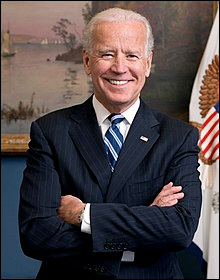By Jim Ellis

Sen. Elizabeth Warren (D-MA) moving up in Nevada
First, Sen. Elizabeth Warren (D-MA), who is beginning to show signs of upward mobility after being stagnant since her campaign’s inception, moves into the runner-up position in the Silver State and, second, neighboring Sen. Kamala Harris (D-CA) fares poorly in an early voting venue where she needs to succeed.
The Monmouth data projects former Vice President Joe Biden to be leading the pack of candidates, as in almost every current poll, with 36 percent preference and Sen. Warren follows with 19 percent, ahead of Sen. Bernie Sanders (I-VT) who drops to 13 percent. Sen. Harris then places fifth with just six percent support, and one point behind South Bend Mayor Pete Buttigieg.
Monmouth then asked the second-choice question. Within these responses, the candidates are closely bunched. Here, it is Sen. Warren who leads with 15 percent, but the group is so close that a statistical tie among the top four is the best way to categorize the answers. After Sen. Warren, Sen. Sanders posts 14 percent, while Sen. Harris performs better than on the initial ballot test, tying Biden at 13 percent.
The Nevada Caucus, even though it holds only 36 first-ballot delegates, is an important momentum builder. Placed third on the nomination calendar, Nevada follows the Iowa Caucus and New Hampshire primary, respectively. It is scheduled for Saturday, Feb. 22, and exactly a week before the South Carolina primary.
Nevada is important for Sen. Harris because she is unlikely to do particularly well in either Iowa or New Hampshire. She is expected to be one of the top finishers, if not the winner, in South Carolina, so a strong performance in Nevada is critical to give her some needed momentum in order to maximize her chances in the Palmetto State.


 May 24, 2019 — As the Democratic presidential field swells to 24 candidates — with the first Democratic presidential forum on tap for late June in Miami, and the first votes being cast in Iowa now just over eight full months away — it’s a good time to review how different this presidential nomination contest will be from the 2016 version.
May 24, 2019 — As the Democratic presidential field swells to 24 candidates — with the first Democratic presidential forum on tap for late June in Miami, and the first votes being cast in Iowa now just over eight full months away — it’s a good time to review how different this presidential nomination contest will be from the 2016 version. 
 By Jim Ellis
By Jim Ellis